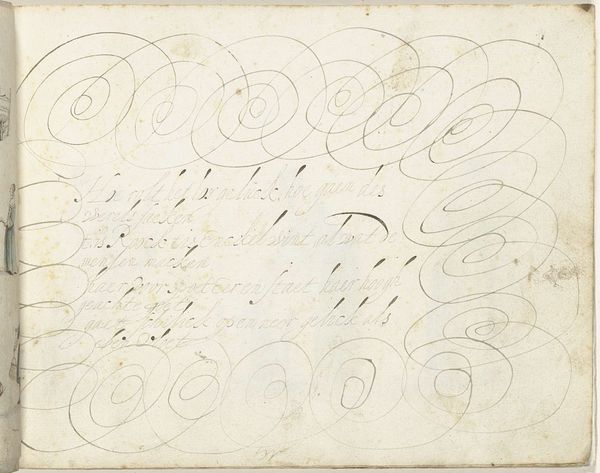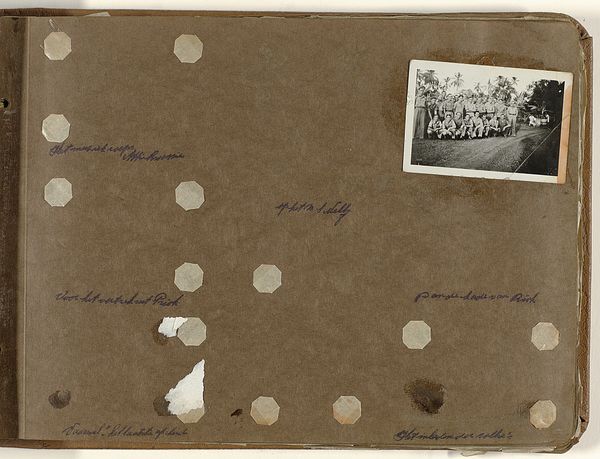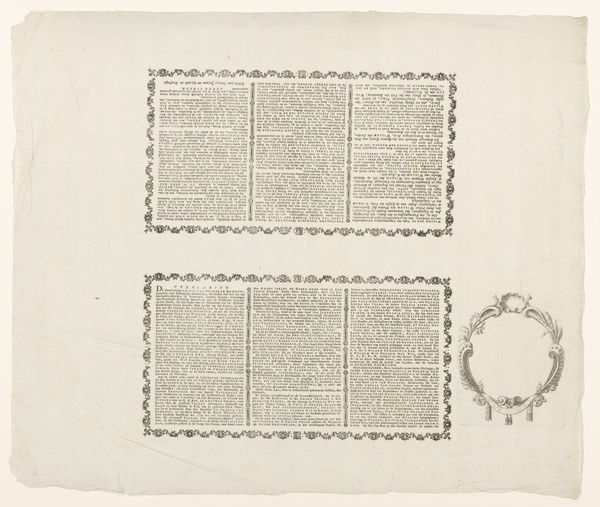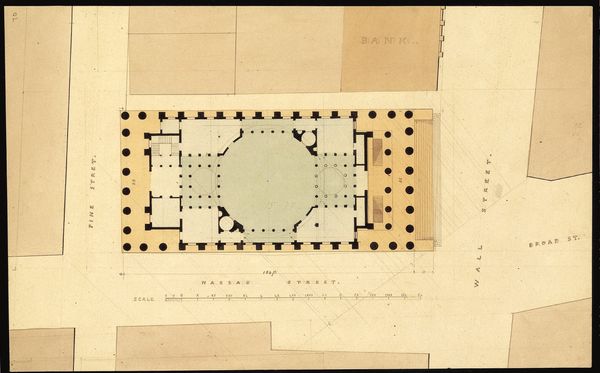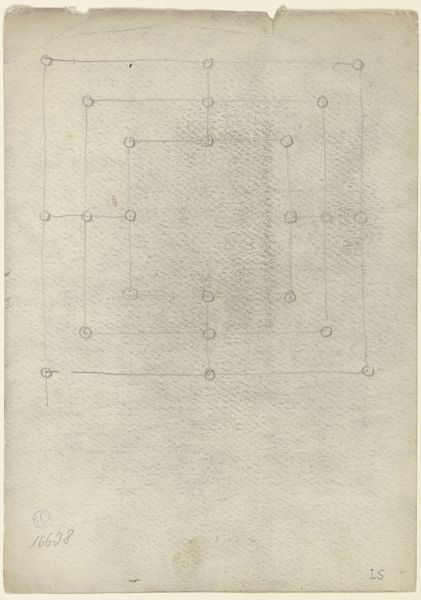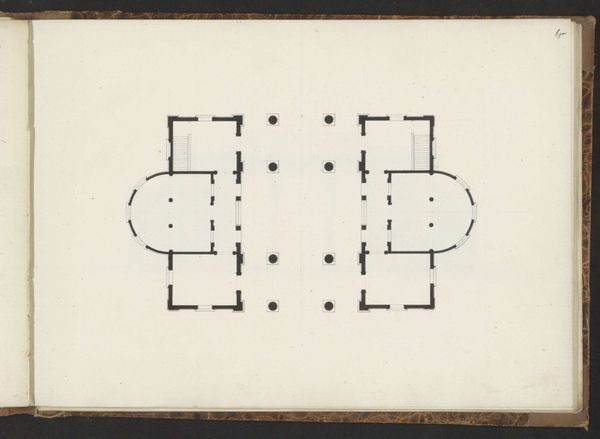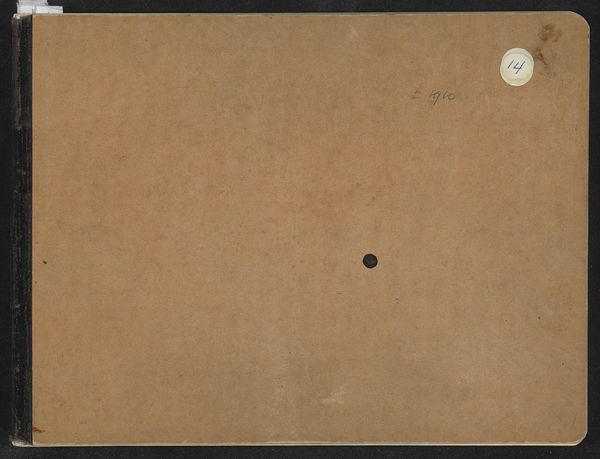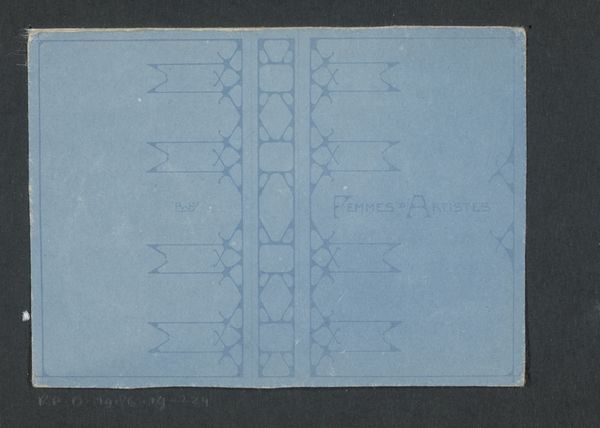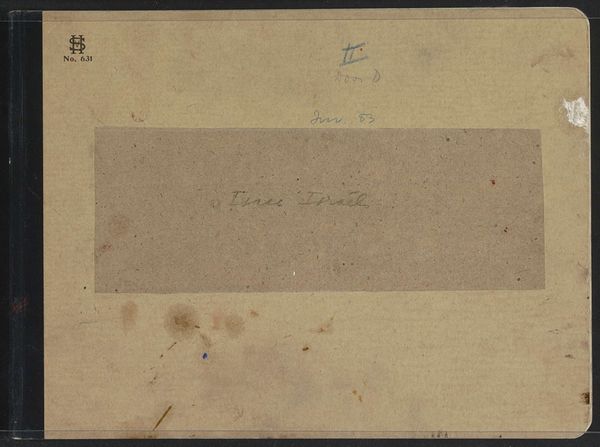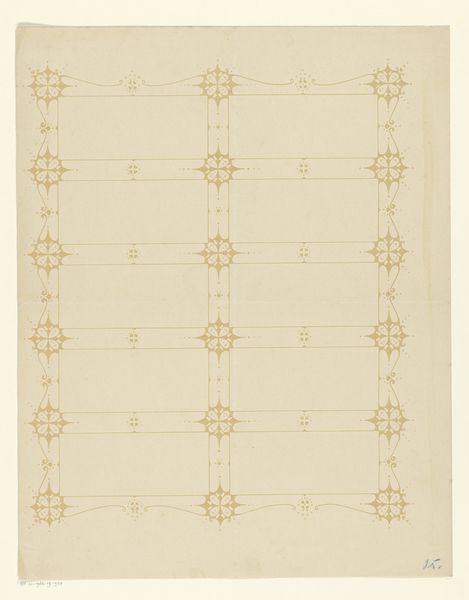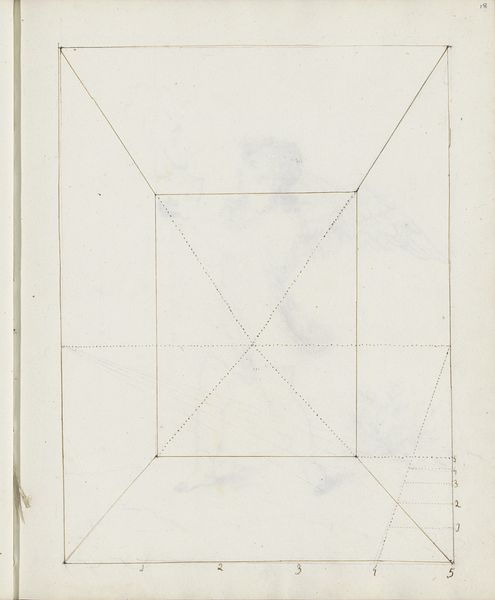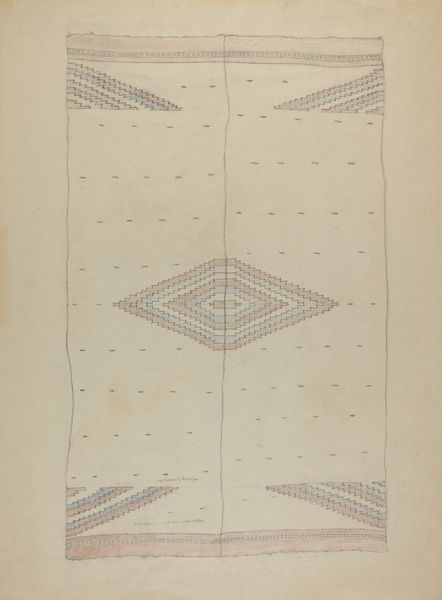
drawing, mixed-media, paper, ink
#
drawing
#
mixed-media
#
paper
#
ink
#
coloured pencil
Dimensions: height 24 cm, width 34 cm
Copyright: Rijks Museum: Open Domain
Curator: It’s interesting, almost like a map charting something obscured. Editor: Indeed. Here we have, from circa 1948-1949, a piece entitled "Enkel opschriften," an artwork rendered in ink, colored pencil, and mixed media on paper. It appears to be an open notebook, actually. What do you make of its aesthetic? Curator: Well, initially, there's a subdued quality to it. The color palette is muted, giving the entire work a contemplative aura. It feels sparse, almost economical, in its use of imagery. And I cannot really grasp if the octagons or the script were the main subject, initially. Editor: It prompts me to consider what this means in the immediate aftermath of World War II. Given the period and its quietness, might it represent a subdued response to profound, widespread devastation, culturally? A moment for quiet reflection as part of the historical context. Curator: That’s plausible, even probable. A need for understated resistance, perhaps? Are these notes, labels of trauma and memory in the artist’s social environment? It is unclear from the material used in it if we are looking at notes from after a major event, or simply records taken in an everyday setting. How can we, as cultural investigators, ensure a comprehensive view in line with today’s understanding of gender, identity, and political struggles? Editor: Those white shapes create a repetitive rhythm, perhaps suggesting the ceaseless passage of time or recurring societal issues? Curator: Perhaps. The artist, anonymous, does not give any obvious visual indication to their personal narrative, thus giving us a wide scope for interpretative work, maybe? How do you experience the notebook aesthetic impacting on the impact that it has? Editor: The use of what is most likely common paper in a cheap notebook underscores the commonality of the experiences and events listed. In this, it manages to touch on some historical and broadly present experience, too. Curator: To conclude, then, I think what resonates most is this artwork's restraint, that it prompts questioning the very nature of absence and understated experiences in broader discourses. Editor: And for me, it is its quiet reflection that seems most striking about "Enkel opschriften." It brings forth questions related to larger socio-political factors.
Comments
No comments
Be the first to comment and join the conversation on the ultimate creative platform.

